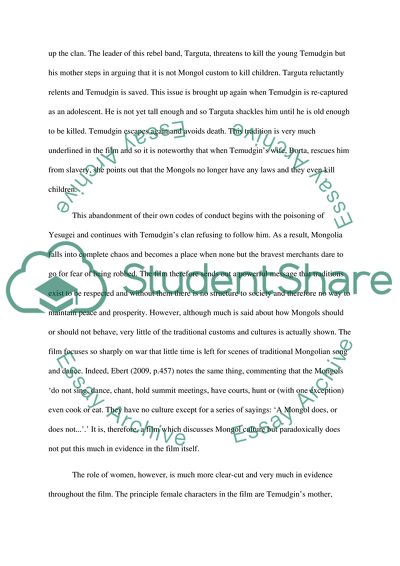Cite this document
(“An Analysis of the Film Mongol Essay Example | Topics and Well Written Essays - 2000 words”, n.d.)
Retrieved from https://studentshare.org/visual-arts-film-studies/1556685-mongol-film-analysis
Retrieved from https://studentshare.org/visual-arts-film-studies/1556685-mongol-film-analysis
(An Analysis of the Film Mongol Essay Example | Topics and Well Written Essays - 2000 Words)
https://studentshare.org/visual-arts-film-studies/1556685-mongol-film-analysis.
https://studentshare.org/visual-arts-film-studies/1556685-mongol-film-analysis.
“An Analysis of the Film Mongol Essay Example | Topics and Well Written Essays - 2000 Words”, n.d. https://studentshare.org/visual-arts-film-studies/1556685-mongol-film-analysis.


